What kind of Asian coffee do you have? Introduction to the origin of Asian coffee what are the characteristics of Asian coffee?
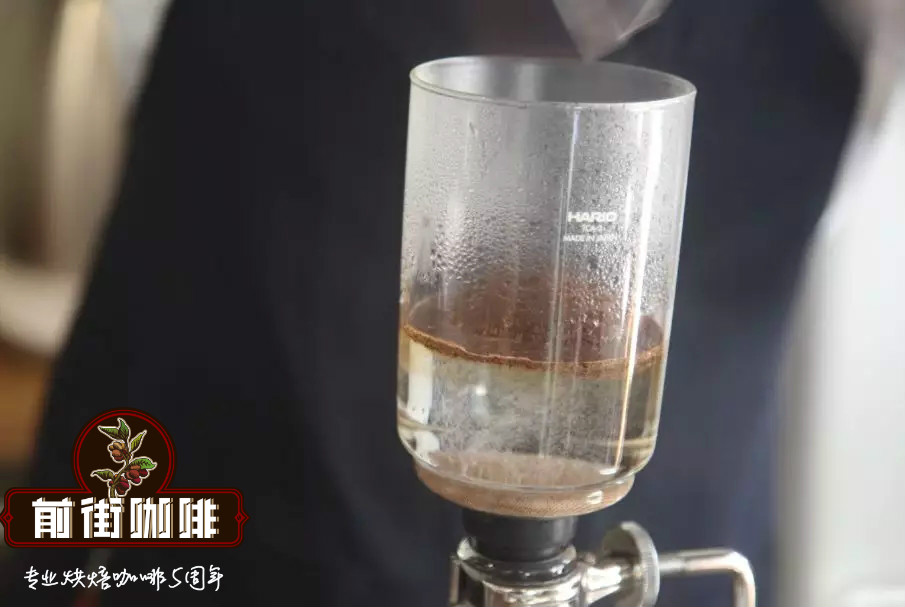
Professional coffee knowledge exchange More coffee bean information Please pay attention to coffee workshop (Weixin Official Accounts cafe_style)
I heard that coffee is imported, so it is imported from western countries. If that's the case, you're wrong. We're in Asia and one of the top three coffee producers in the world. The other two are Africa and America. Although coffee is imported, it is also regionally limited. Today, I will share with you the origin of coffee from Asia.
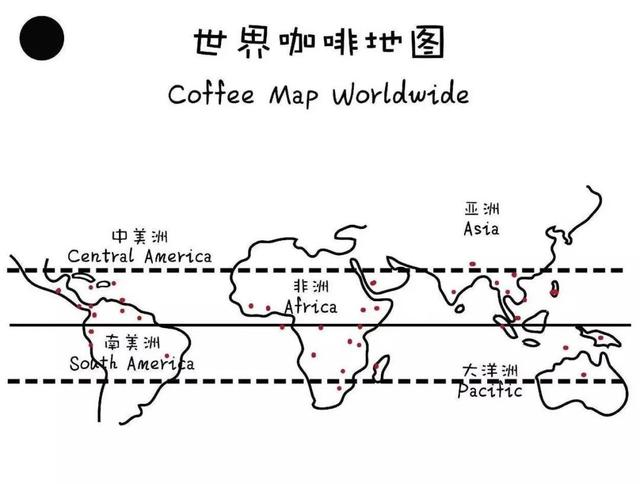
Asia (ASIA)
When it comes to Asian coffee, the first impression of coffee lovers is often calm and calm. Asian coffee is generally characterized by thick flavor, strong sweetness and round taste, but slightly flat aroma and brightness. It is precisely because of the heavy nature of Asian coffee that it is very suitable to be used as a base when making Italian coffee. The raw coffee beans in Asia are generally processed by wet or semi-wet process. most of the raw beans are uniform, but the color of the beans treated by semi-wet method is darker.
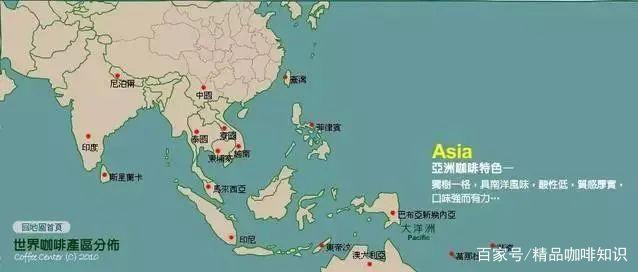
Indonesia:
Coffee in Indonesia is represented by Java and Sumatra Mantenin. It is generally believed that Indonesian coffee beans have a mellow flavor and low acidity, with flavors similar to traditional Chinese medicine and soil. For example, robusta beans from Java have a unique smell and are often used as one of the recipes for espresso because they are rich in oil. In Indonesia, there is also an animal called civets, which likes to eat ripe berries and then expel the coffee beans from the body to form Kopi Luwak.
Java (Java)
Java produces a lot of coffee, but it is a pity that at present, most of them are robusta species with poor flavor, and there are few high-quality Arabica beans left. this is because a coffee disaster in the 1970s caused coffee farmers to abandon the high-quality but delicate Arabica. Robsta, which is high-yield, easy to take care of but low-quality, only a few government-owned estates still produce high-quality Arabica beans. Thanks to the existence of these manors, we can taste the excellent java beans. Often seen are Cayumas, Brawan and Gemma (or spelled as Jampit). The taste of these state-owned estates is very clean, coupled with soft fruit acidity and aroma, Kaoumas has a slightly heavier flavor, but the point is that these high-end Java beans have a sense of balance that ordinary Asian beans do not have, and less disturbing fishy smell!
Sumatra (Sumatra)
Coffee cultivation in Sumatra began in the 18th century, when the planting area was near Aceh province on the north side of Lake Tawar. For a few days, most of the Sumatran coffee area is located in the south of Lindong, Subu and Takengon coffee. Because there is little difference between planting areas, Sumatran coffee does not use the producing area as the distinguishing standard, but the way of picking and handling has a great influence on the flavor of the coffee. The famous "Golden Manning" is an excellent product after the Japanese strictly control these procedures. This trend has now reached a consensus in Sumatra, so some famous coffee farms have been invited to act as consultants to local coffee farms to improve the quality of their coffee through their technical and industrial knowledge (KNOW-HOW). Mantenin is one of the most suitable coffee beans for deep roasting in the world. One of the famous reasons is that its own characteristics will not disappear after deep roasting. Its thick flavor and low acidity make it very popular in Taiwan. In fact, the high quality mantenin is also very suitable for medium and shallow baking, which can show a good fruit flavor at this degree of baking.
Sulawesi (Sulawesi)
Sulawesi is also known as Cyberis, which is actually an old name. Sulawesi has three ways of washing, drying and semi-washing at the same time, but although the washed beans look good, the taste is often insipid. Ugly dried beans have thicker texture and better taste. In fact, most of the dried beans are semi-washed beans. The farm chooses to separate the pulp from the seeds. The beans are sent to the processing plant and then fermented and washed, or washed directly and then dried in the sun. Sulawesi Coffee is low in acidity, thick in texture and with a deep herbal flavor, similar to Sumatra's Mantenin as a whole. The most representative producing area is Traga. In addition to being a very distinctive single bean, Sulawesi is also very suitable for mixing into Espresso recipes.
[coffee bean treatment]
The main treatment methods of Indonesian coffee beans are sun treatment, water washing and wet planing. Because of the humid climate, Rain Water frequently, in order to pursue a more efficient drying, the use of water washing treatment and wet planing method.
The most famous coffee bean treatment in Indonesia is the wet planing method. The area where this treatment is used is mainly distributed in Sumatra in western Indonesia, which is rich in rich Mantenin coffee. The wet planing method mainly has two stages: peeling off the peel and pulp of the coffee fruit, briefly fermenting and drying until the moisture content is reduced to 12-13%. This rapid treatment can cause coffee beans to be squeezed and cracked, which is what we call sheep's hoof beans, which is a characteristic of Mantenin coffee beans, not a flaw.
In addition to the conventional wet planing, there is also an old wet planing method. Coffee beans are first treated by ordinary wet planing, and then sealed in the warehouse for 2-3 years. During this period, the acidity of the coffee beans will slowly weaken and turn into sugar, and the Mantenin coffee beans treated with this method are also called old Mantenin coffee beans.
[type of Manning Coffee]
The main production area of Mantenin coffee beans is located in the area of Lake dopa at the northern tip of Sumatra, Indonesia. The common Mantenin coffee beans are gold mantenin coffee beans, Lindong mantenin coffee beans and old mantenin coffee beans.
The difference between these three mantenins is that Lin Dong Mantenin represents the most Mantenin flavor and has a strong herbal flavor. And Golden Manning is a selected grade PWN (Indonesia's local Mantenin company) Mantenin, bean size is uniform and more than 18 mesh, manual screening more than 4 times, its taste is clean and bright, but mellow taste is also excellent. Old Manning has also said before that the use of different wet planing treatment will bring out a stronger flavor, which is not acceptable to ordinary people.
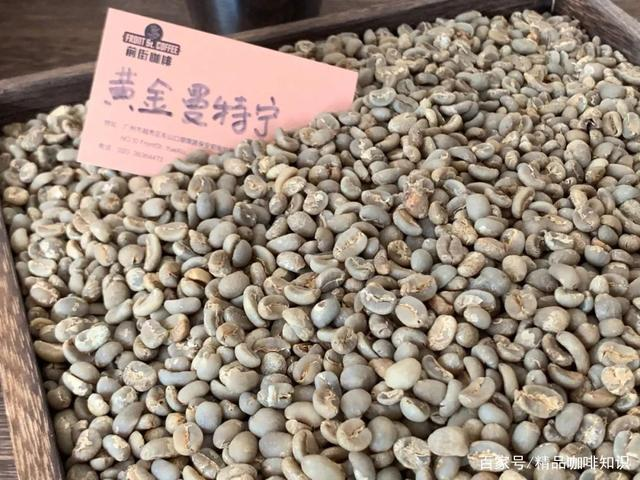
[former Street Coffee Golden Manning Coffee as an example]
Qianjie Coffee Gold Manning Coffee Bean
Suggested cooking parameters: Kono filter cup, 88 ℃ water temperature, 15g coffee powder, 1:15 water powder ratio, medium fine grinding (BG#6W)
Suggestion on brewing: Qianjie coffee is recommended to be steamed in stages, 30 grams of water for 30 seconds, 125 grams of small water injection, 225 grams of water injection when the water level is about to be exposed, and the extraction time is 2 minutes.
Flavor description: nuts, spices, herbs, licorice, chocolate, caramel, clean and soft flavor.

Yunnan, China (China Yunnan)
Coffee growing areas in China are mainly distributed in Yunnan, Hainan and Taiwan. Hainan mainly grows robusta coffee beans, while Yunnan and Taiwan mainly grow Arabica coffee beans. At present, Yunnan is the most popular coffee producing area in China.
Yunnan is located in the south of the Tropic of Cancer, belongs to the subtropical mountain climate region, the unique plateau red soil, the soil is fertile and loose, the climate is mild, especially suitable for growing small-grain coffee. Small seed is what we call Arabica coffee beans. when it was introduced into China, in order to promote memory, we chose the name small seed instead. The representative coffee bean in Yunnan is Katim coffee bean.
The unique natural conditions of Yunnan have formed the special flavor of Yunnan small-grain coffee, which is strong but not bitter, fragrant but not strong, and slightly fruity. As early as the 1950s, Yunnan small seed coffee was very popular in the international coffee market and was rated as the top grade of coffee. The planting areas are mainly distributed in Lincang, Baoshan, Simao, Xishuangbanna, Dehong and other areas. The average temperature of Baoshan is 21.5℃, and the highest is 40.4℃, which is basically frost-free all the year round. It is recognized as the best producing area of small-grain coffee.
At present, the planting area of coffee beans in Yunnan Province accounts for 70% of the national area, and the output accounts for 83% of the whole country. Yunnan coffee has established the dominant position in China in terms of planting area and coffee bean production.
[coffee bean treatment]
The treatment methods of coffee beans in Yunnan now tend to be diversified, such as solarization, washing and anaerobic treatment, showing a state in which a hundred schools of thought contend. At present, China's coffee market is still in the rising stage, and there is a lot of room for development. not limited to a particular way of handling coffee beans is actually a necessary way to explore the process, and determining the preferences of the public is the key.
[coffee bean varieties]
At present, the main varieties of coffee beans in Yunnan are iron pickup and Katim. Iron pickup is the oldest native variety in Ethiopia. Its top leaf is bronzed, and some people call it "red top coffee". The beans are large, pointed oval or thin. Iron pickup coffee has its unique quiet and clean flavor, as well as balanced features, high cleanliness, but the only drawback is insufficient production, altitude requirements, at the same time easy to infection with leaf rust, and resistance to diseases and insect pests is not strong.
In 1959, the Portuguese moved the Brazilian bourbon mutant Kaddura to East Timor to interbreed with Tim, who was of Robusta descent, and unexpectedly succeeded in breeding Kadim with disease resistance and super production capacity. As leaf rust affects coffee-producing countries around the world, with the help of international organizations, countries vigorously promote Katim to fight leaf rust and increase production capacity.
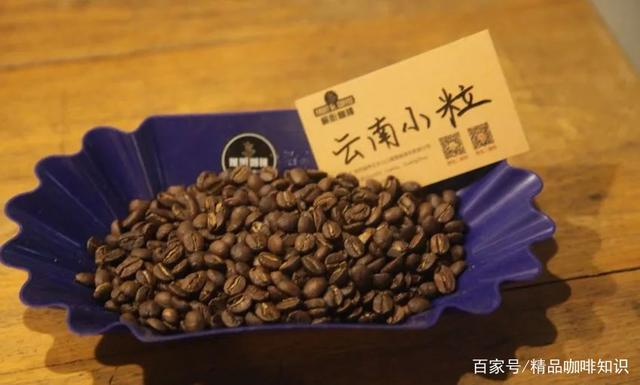
[former Street Coffee Yunnan small Grain Coffee as an example]
Cooking parameters: Kono filter cup, 1:15 ratio of powder to water, 15g coffee powder, medium and fine grinding
The step-by-step extraction was performed with 30g steam for 30 seconds, small water injection to 125g, then water injection to 225g, and the whole extraction time was 2 minutes.
Palate: nutty aromas, with herbs, chocolate and caramel on the palate, with a hint of acidity in the finish.
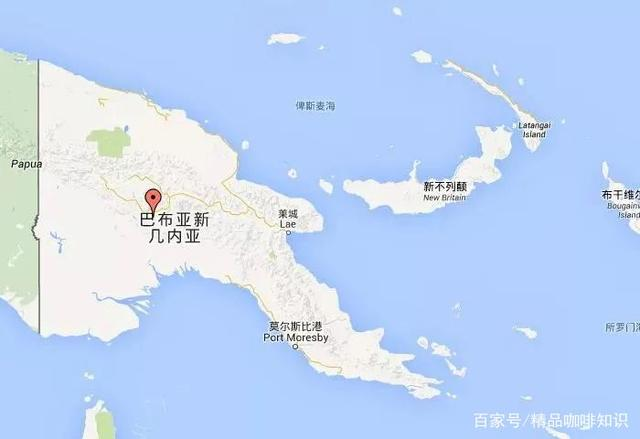
Papua New Guinea (Papua New Guinea)
Papua New Guineans see the bird of paradise as a symbol of freedom and happiness. PNG AA Sigri Manor Arabica Coffee, named Paradise Bird Coffee, has the same flavor as the name, with special spice and rich sweet and sour taste. For example, this coffee bean is bred by the Jamaican Blue Mountain Ironhide Card after a long journey to Papua New Guinea, with the same blood of the Jamaican Blue Mountain.
[coffee bean treatment]
In Papua New Guinea, coffee is a national crop, and 90% of it is grown by small farmers, supporting 1. 3% of the national income. Most of the small estates use the washing method to treat the coffee beans, which has a strong taste but no local flavor. In addition, they also use a small amount of sun treatment, which has a better flavor than the washing method. The taste of the large manor coffee is relatively clean and meticulous.
[coffee bean varieties]
Basically, the texture of Papua coffee beans is lighter than Java coffee beans in Indonesia, somewhat similar to good-quality Central American coffee beans. Most of the coffee trees in Papua New Guinea come from Tibica coffee trees in Jamaica, so they are known as the "Little Blue Mountain".
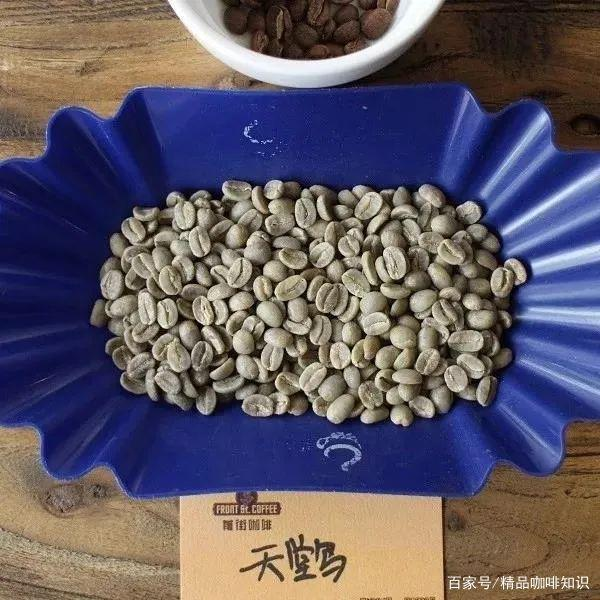
Front Street Coffee Papua New Guinea Paradise Bird Coffee beans
[former Street Coffee Babu Paradise Bird Coffee as an example]
Cooking parameters: Kono filter cup, 1:15 ratio of powder to water, 15g coffee powder, medium and fine grinding
The step-by-step extraction was performed with 30g steam for 30 seconds, small water injection to 125g, then water injection to 225g, and the whole extraction time was 2 minutes.
Palate: the palate is rich in layers, with sweet and bright acidity, with a special finish of spices, full-bodied and well-balanced.
India (India) Monsoon Mala
The taste of Indian coffee is very mild, very low in intensity and acidity, with some spice and, of course, the common local flavor of Asian beans. India is usually used to blend into Espresso recipes. In fact, Indian beans taste like Sulawesi beans or Sumatra beans, but not that thick. Indian coffee does not sell well in the international market, and the main markets are in India. Indian beans treated in the sun are called Cherry, Arabica beans washed in water are called Plantation Arabica, and Robusta in water are called Parchment Robusta. In addition, rainy beans and aged beans increase the consistency of coffee and dark chocolate-flavored aged beans.
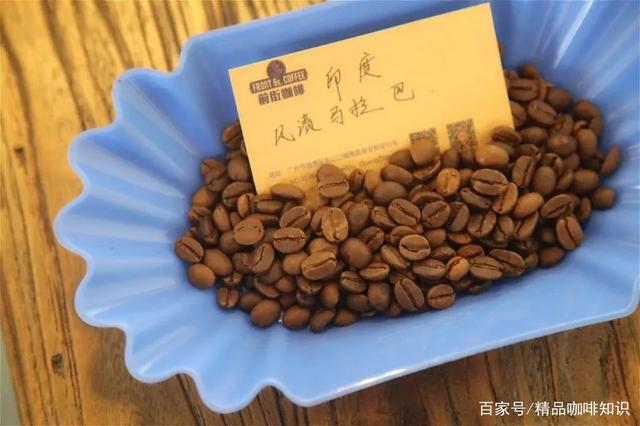
[Former Street Coffee Indian Wind Stain Malaba Coffee as an Example]
Brewing parameters: Kono filter cup, 1:15 powder to water ratio, 15g coffee powder, medium fine grind
Steaming 30g water for 30 seconds, small water flow to 125g stop, then water injection to 225g end, the whole extraction time of 2 minutes.
Palate: Rich caramel, raisin, herbal flavor, taste like black rice tea, berry aftertaste.
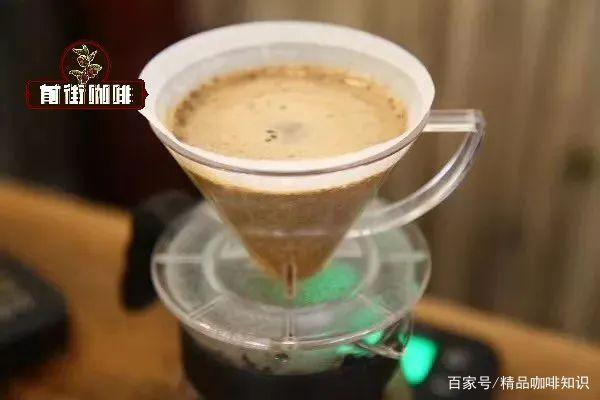
Vietnam
Vietnam is the number one coffee producer in Asia. Perhaps under the influence of French colonial rule, coffee grown in Vietnam has a French flavor. Arabica coffee beans were brought to Vietnam by French missionaries in the mid-19th century and were grown near Tonkin Bay, mostly of Java or bourbon varieties.
At present, coffee production in Vietnam is growing. The main varieties of coffee beans exported are robusta coffee beans. 96% of robusta coffee beans come from small farms, as well as a small number of large state-owned farms. Although Vietnam produces a lot of coffee, it mainly produces robusta coffee beans, which still lags behind Brazil, Colombia and other coffee countries in terms of quality.
END
Important Notice :
前街咖啡 FrontStreet Coffee has moved to new addredd:
FrontStreet Coffee Address: 315,Donghua East Road,GuangZhou
Tel:020 38364473
- Prev

Luckin Coffee becomes the official partner of NBA China in 2019. The participating teams are the Lakers and the Nets.
Professional coffee knowledge exchange more coffee bean information please follow the coffee workshop (Wechat official account cafe_style) Luckin Coffee (Luckin Coffee) announced through the official platform as the official partner of the 2019 NBA China Competition. On June 17, Luckin Coffee announced through official channels that Luckin Coffee had become the official partner of the 2019 NBA China Games, and the two sides joined hands to eliminate youth.
- Next

Luckin Coffee IPO underwriter implemented the over-allotment right to raise an additional 84.15 million US dollars.
Professional coffee knowledge exchange more coffee bean information follow Coffee Workshop (Wechat official account cafe_style) Luckin Coffee (LK.US) announced on Wednesday that under the over-allotment exercise agreement reached with the underwriters of the initial public offering (IPO), the company has completed the issue of 4.95 million additional ADS shares at the offering price of US $17. Before deducting the issue fee, commission, etc.
Related
- What brand of black coffee is the most authentic and delicious? what are the characteristics of the flavor of the authentic Rose Summer Black Coffee?
- Introduction to the principle and characteristics of the correct use of mocha pot A detailed course of mocha pot brewing coffee is described in five steps.
- Which is better, decaf or regular coffee? how is decaf made?
- How much is a bag of four cat coffee?
- How about four Cat Coffee or Nestle Coffee? why is it a cheap scam?
- Which is better, Yunnan four Cats Coffee or Nestle Coffee? How about cat coffee? is it a fake scam? why is it so cheap?
- How about Cat Coffee? what grade is a hoax? which instant coffee tastes better, four Cat Coffee, Nestle Coffee or G7 coffee?
- Process flow chart of coffee making-Starbucks coffee making process what coffee tastes good at Starbucks
- The top ten best coffee beans in the world Rose summer coffee or Tanzanian coffee tastes good
- Yunnan four cat coffee is good to drink?_four cat coffee is a big brand? four cat blue mountain coffee is fake?

